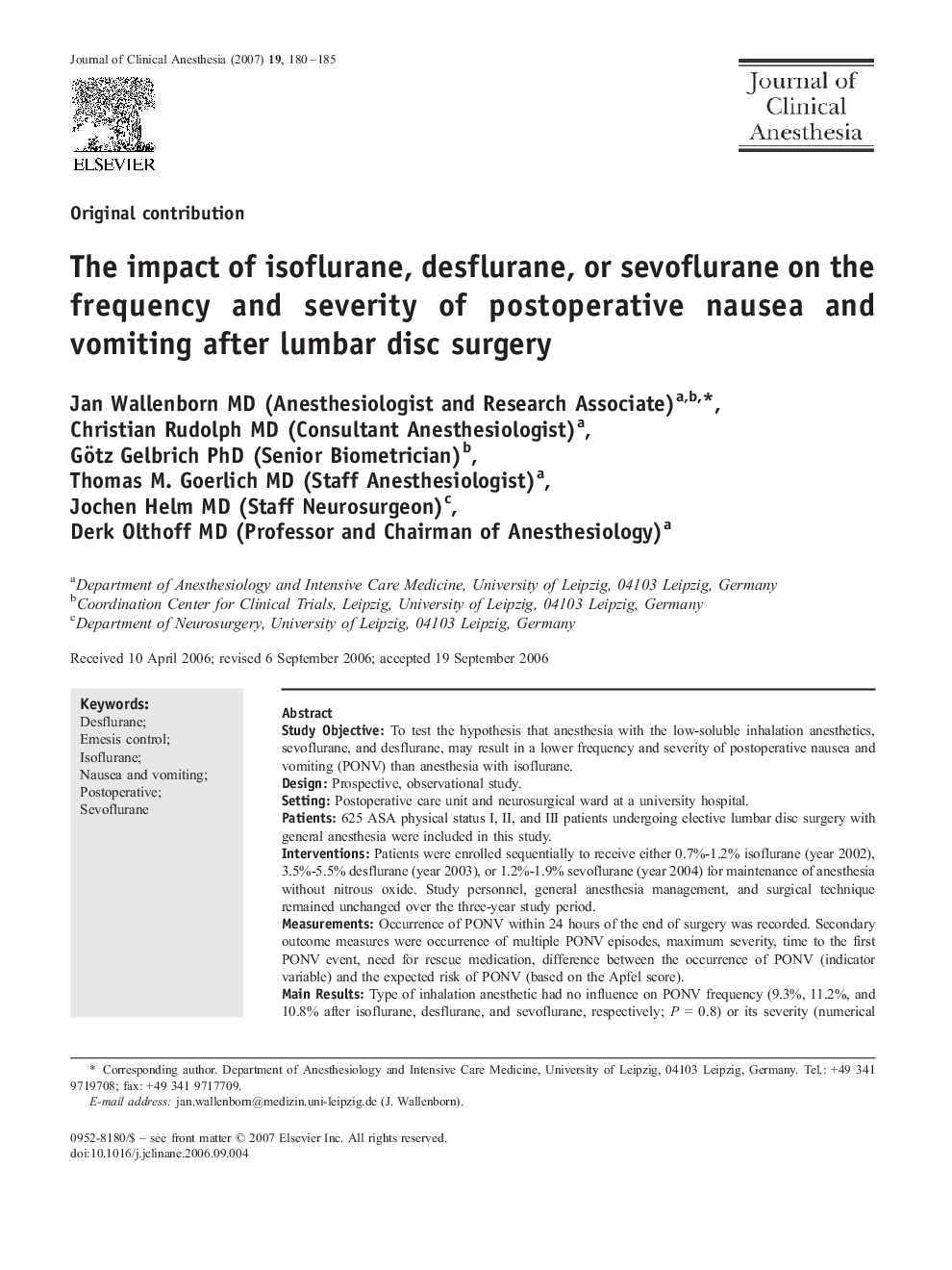| Article ID | Journal | Published Year | Pages | File Type |
|---|---|---|---|---|
| 2763919 | Journal of Clinical Anesthesia | 2007 | 6 Pages |
Study ObjectiveTo test the hypothesis that anesthesia with the low-soluble inhalation anesthetics, sevoflurane, and desflurane, may result in a lower frequency and severity of postoperative nausea and vomiting (PONV) than anesthesia with isoflurane.DesignProspective, observational study.SettingPostoperative care unit and neurosurgical ward at a university hospital.Patients625 ASA physical status I, II, and III patients undergoing elective lumbar disc surgery with general anesthesia were included in this study.InterventionsPatients were enrolled sequentially to receive either 0.7%-1.2% isoflurane (year 2002), 3.5%-5.5% desflurane (year 2003), or 1.2%-1.9% sevoflurane (year 2004) for maintenance of anesthesia without nitrous oxide. Study personnel, general anesthesia management, and surgical technique remained unchanged over the three-year study period.MeasurementsOccurrence of PONV within 24 hours of the end of surgery was recorded. Secondary outcome measures were occurrence of multiple PONV episodes, maximum severity, time to the first PONV event, need for rescue medication, difference between the occurrence of PONV (indicator variable) and the expected risk of PONV (based on the Apfel score).Main ResultsType of inhalation anesthetic had no influence on PONV frequency (9.3%, 11.2%, and 10.8% after isoflurane, desflurane, and sevoflurane, respectively; P = 0.8) or its severity (numerical rating scale, 4.5 ± 2.0, 4.4 ± 2.4, and 4.2 ± 2.1; P = 0.9). Patients who received isoflurane experienced fewer early events but had a late peak of PONV frequency (P = 0.031). For every 10 minutes by which the total duration of the anesthesia exceeded the net time between incision and suture, the risk of PONV increased by a factor of 1.36 (95% confidence interval, 1.15-1.61; P < 0.001).ConclusionsThere is no difference between the three inhalation anesthetics currently used with regard to frequency or severity of postoperative nausea, vomiting, or both.
